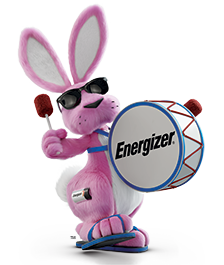Battery Chemistry

Battery chemistry.
Knowing your cathode from your anode.
An alkaline battery produces electricity when the manganese dioxide cathode is reduced and the zinc anode becomes oxidized.
Zn + 2 MnO2 + H2O → ZnO +2 MnOOH
2 MnO2 + 2 H2O+ 2 e– → 2 MnOOH + 2 OH–
Zn + 2 OH– → ZnO + H2O + 2 e–
Applying this battery chemistry to the real world, the electrons (e) generated during the reaction are used to power devices. The efficiency of the reaction depends on the quality of the raw materials and availability of water and hydroxyl ions during reaction.
In simple terms, each battery is designed to keep the cathode and anode separated to prevent a reaction. The stored electrons will only flow when the circuit is closed. This happens when the battery is placed in a device and the device is turned on – same principle as turning on and off a light switch in your house.
When the circuit is closed, the stronger attraction for the electrons by the manganese dioxide will pull the electrons from the zinc anode electrode through the wire in the circuit to the cathode electrode. This battery chemical reaction, this flow of electrons through the wire, is electricity – ready to power everything from your digital camera and handheld game, to your wireless mouse, flashlight and portable clock.
Want more detailed information?
If you’re curious about how temperature, capacity and shelf life affect battery chemistry, you can find a depth of technical information at data.energizer.com. Also, our What’s Inside a Battery page can shed even more light on the wonder of battery chemistry.


































